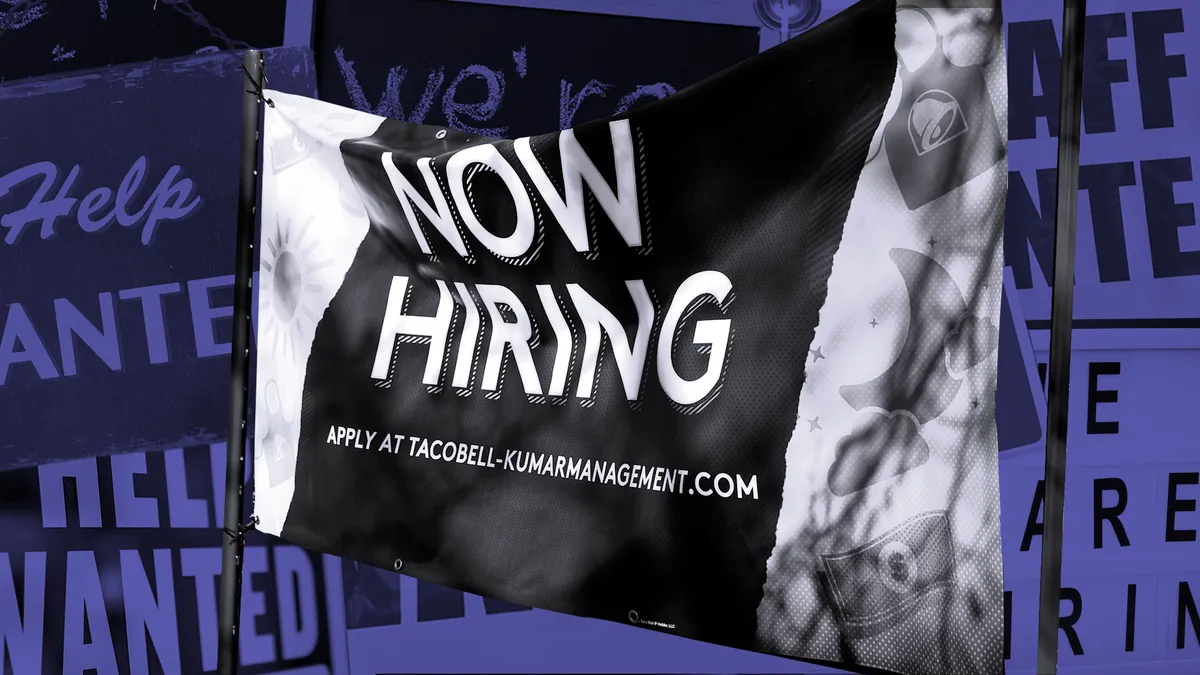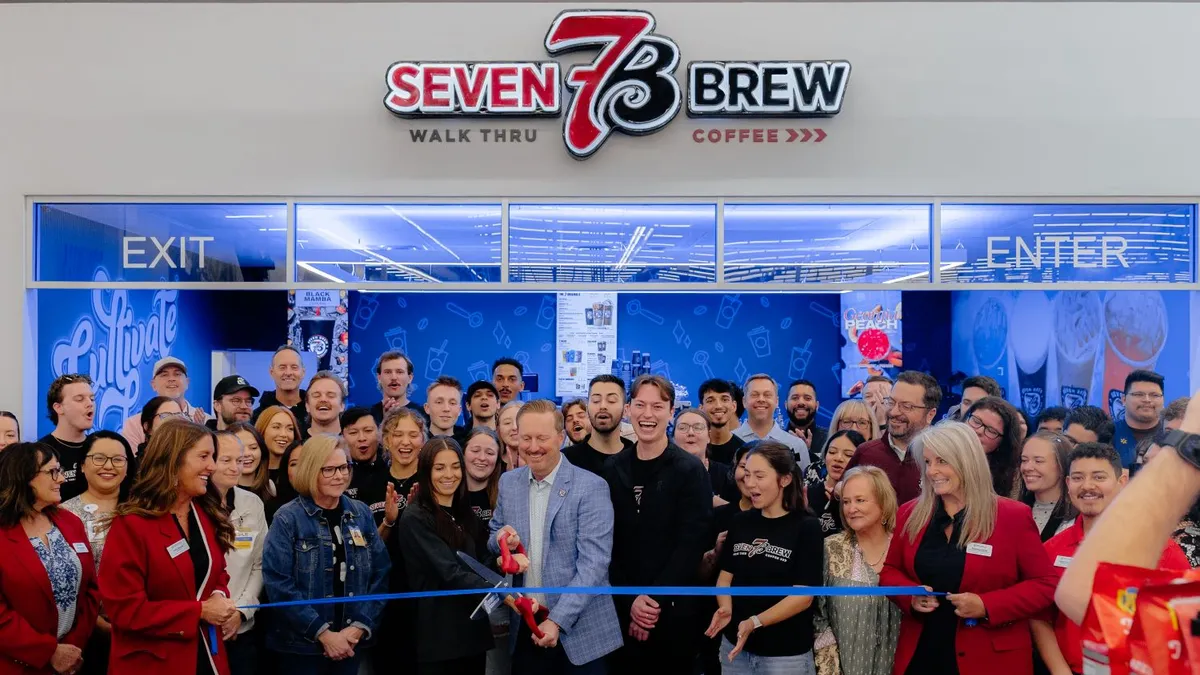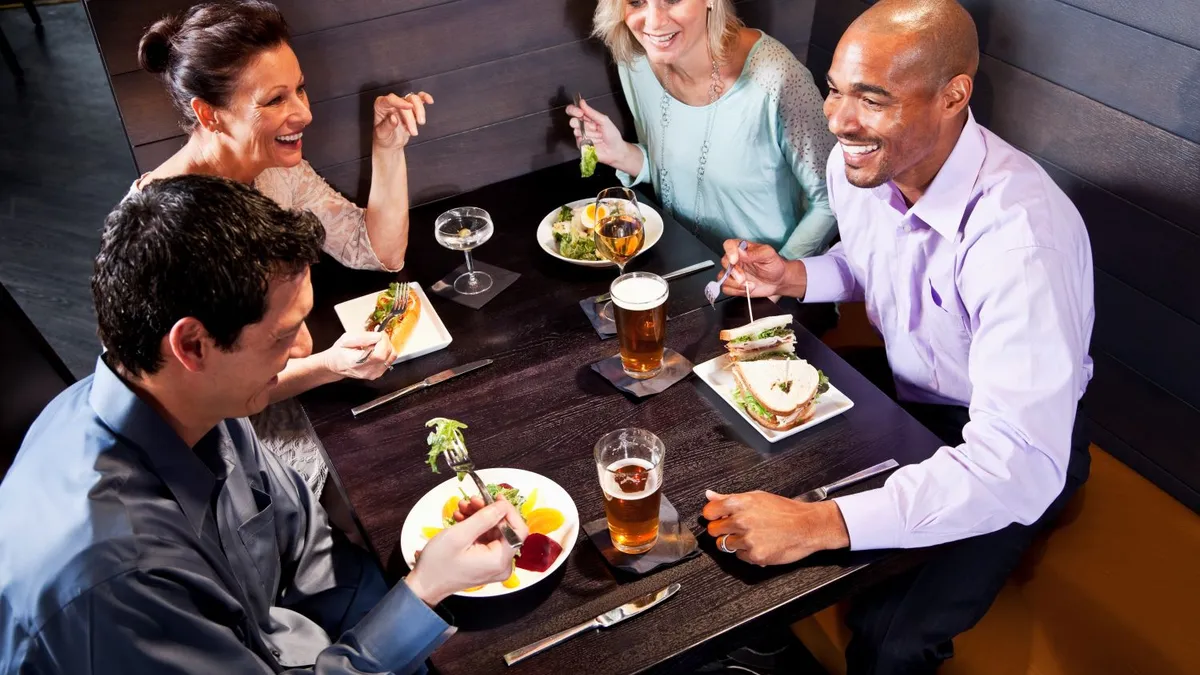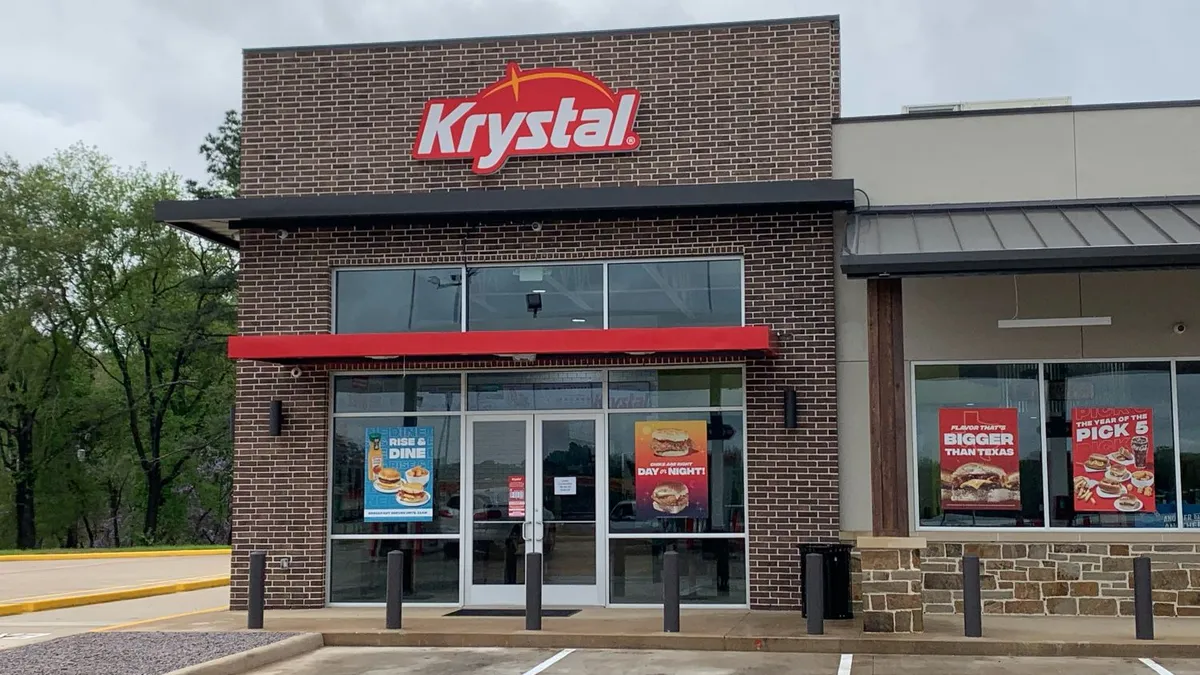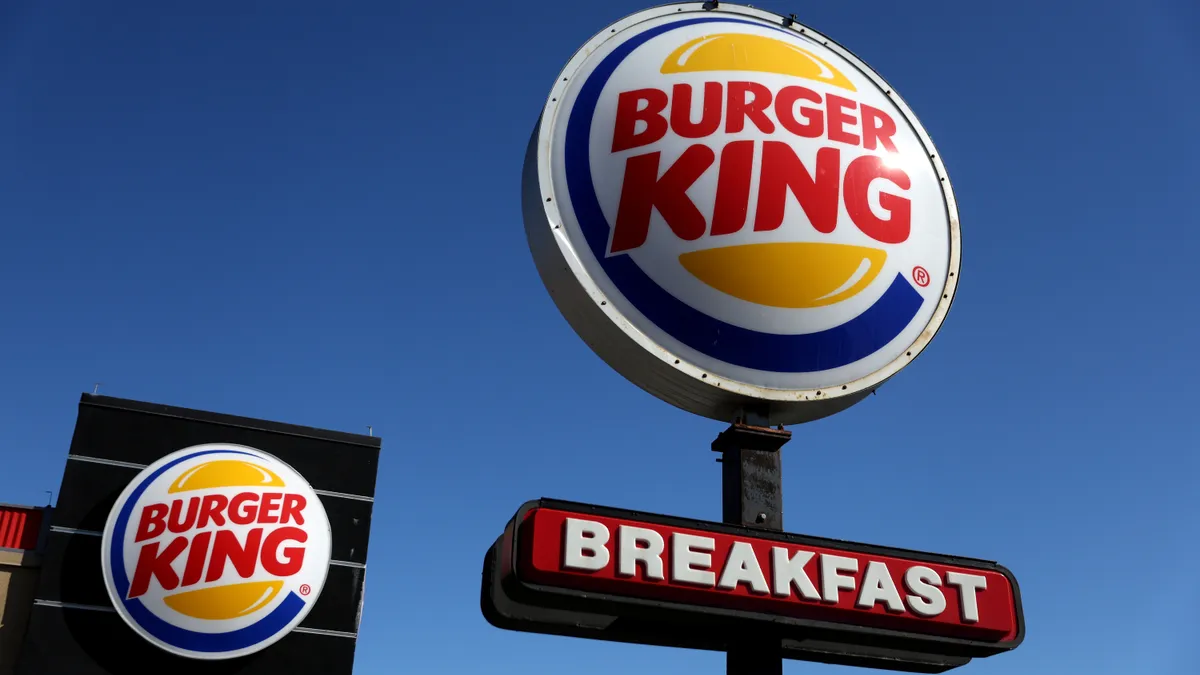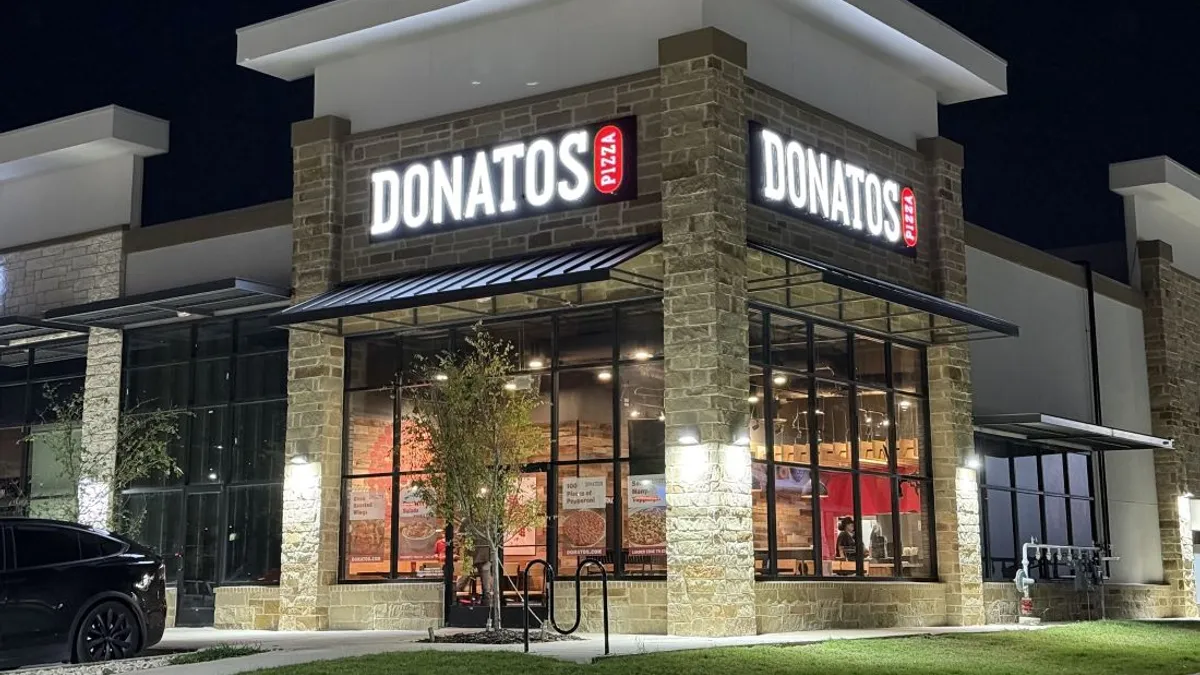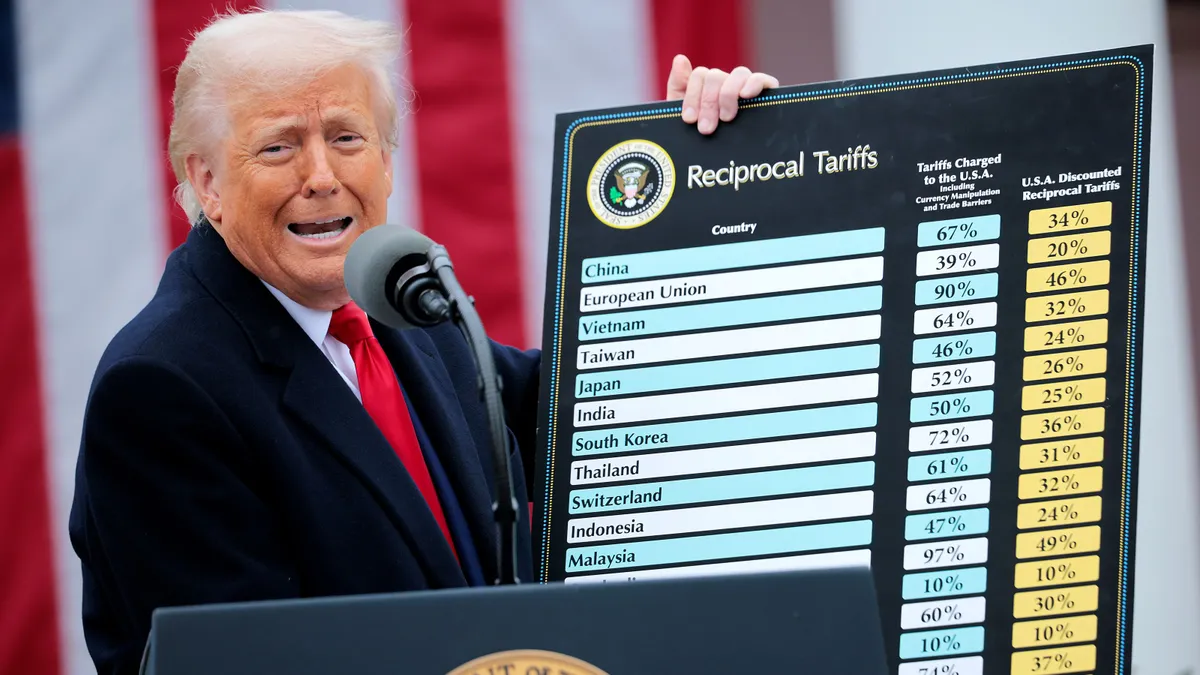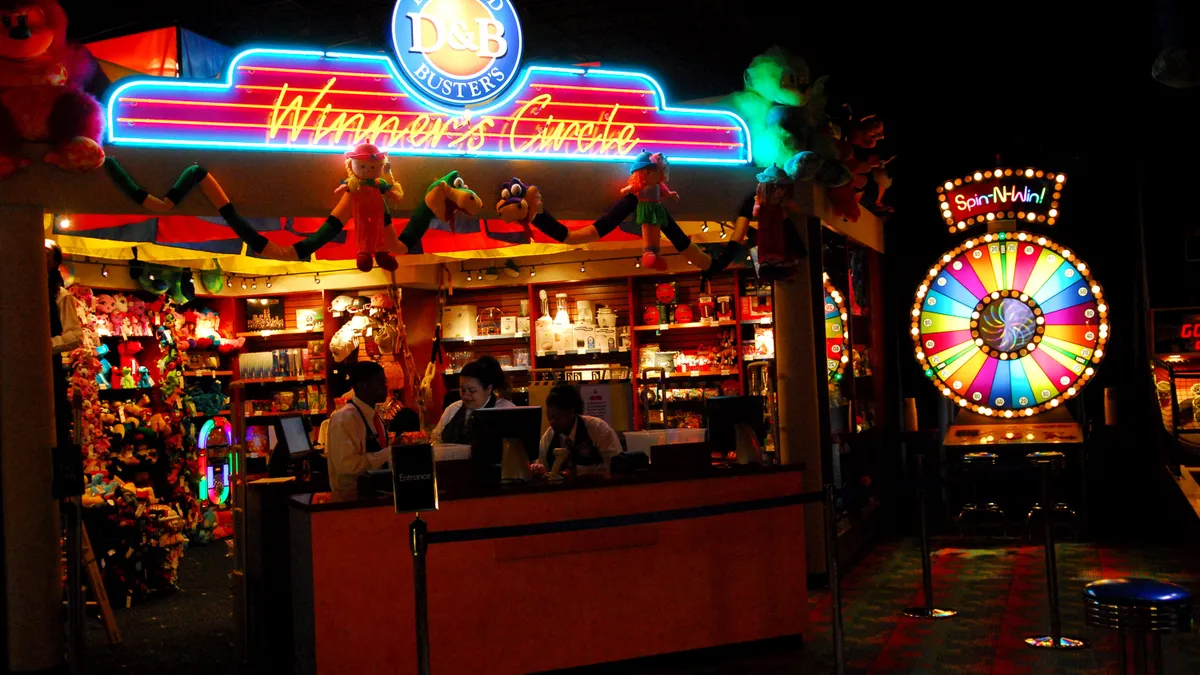This is the second in a three-part series about the restaurant labor shortage.
A year after the pandemic hit the restaurant industry, Beef O' Brady's produced the full-service chain's best sales for March in the history of the company, CEO Chris Elliott said. While this is great news for the chain, which saw sales drop by 70% last March, it's actually creating a big problem.
"We're in a situation where we actually need more people [on staff] than we've ever needed," Elliott said.
Beef O' Brady's entire system has been impacted by the tight labor market, with about 25% of its restaurants seriously impacted and 5% critically impacted, Elliott said. He defined "impacted" as locations that need one to two additional key employees to be efficient, whereas "seriously impacted" restaurants need about three or four more people and "critically impacted" don't have enough people to run a shift.
The company has allowed its operators to check with the owner of a nearby Beef O' Brady's, if there is one, to see whether there are employees that can be shared until their store is fully staffed, he said. It is also trying to reduce the number of employees needed to operate a restaurant by looking at more efficient equipment, menu items that require less prep and using technologies where customers can order and cash out at their tables, Elliott said.
The biggest challenge for Beef O' Brady's is staffing the back of house because there is huge competition for these skilled employees, Elliott said. It's also where operations face the most disruption. If a four-person team is missing one person on a Friday night, running the restaurant becomes exponentially harder because staff have to cover multiple stations, for example, he said.
Within its 176-unit system, Beef O' Brady's needs about two to three additional back-of-house staff members on average per restaurant, Elliott said, adding that he estimates the system needs about 500 employees total.
Beef O' Brady's isn't alone in this struggle. About 40% of restaurants said they are understaffed and are typically short about a dozen employees, according to Landed, a mobile app that helps match employees with employers. Quick-service restaurants are also scrambling to fill positions. As of April 22, hiring at QSRs increased 8% nationally since Jan. 1, according to DailyPay's Reopen America Index. A majority of states are reporting double-digit growth in hiring for the segment, with the Midwest and Southern states averaging growth of 13% and 12%, respectively, as of April 22.
Much like independents, which some analysts say are competing with unemployment benefits and stimulus checks and contending with employees reluctant to return due to safety concerns, chain restaurants are also dealing with competition from a growing gig economy. These jobs can offer more flexible schedules, Landed CEO Vivian Wang said. Gig companies are also expanding rapidly into new markets, including rural and suburban areas, creating more job opportunities, Wang said.
Employee illness is another pressure because individuals with COVID-19 need to stay home for weeks until they are cleared to return, Elliott said.
While customer service could decline at understaffed restaurants, diners still get their end product: a meal from a restaurant, Wang said. Workers are still heavily focused on providing a great experience even if that means a general manager jumps into the back-of-house to be a line cook. The biggest issue is this dynamic creates added strain on existing staff and can drag down sales, she said.
"There's a direct correlation between stores that are struggling to stay staffed and their sales performance," Elliott said.
Restaurant chains like Beef O' Brady's, Taco Bell, Sonic, IHOP, Whataburger, Chipotle and Firehouse Subs are experimenting with various tactics to fill positions, including hosting mass hiring events, increasing pay and benefits and changing how the application process to get more people on the job faster.
Off-premise demand is creating new roles
Job roles are undergoing a rapid shift across chain restaurants, especially since the pandemic generated an emphasis toward takeout and delivery. The slowdown in hiring during March of last year wasn't because the staffing needs weren’t there, but because a lot of organizations were adjusting to new operating standards, Wang said. Revenues were growing, especially for QSRs, in the summer months and into the rest of Q3 and Q4 2020, Wang said.
Pre-pandemic, less than 1% of job postings included terms like carside, curbside, to-go specialist, drive-thru and delivery, but those descriptors rose to 30% in December, according to Landed’s data. Over 85% of Landed's clients have added curbside takeout since the start of the pandemic, Wang said.
Taco Bell, for example, recently launched Go Mobile restaurants that incorporate double drive-thru lanes — one of which is dedicated to mobile ordering — as well as curbside pickup with team members known as "bellhops." The company hosted its fourth annual hiring event on April 21 with plans to hire 5,000 team members across nearly 2,000 locations. As of April 20, Taco Bell had over two dozen open positions for bellhops at restaurants operated by K-MAC Enterprises and Lucwork Enterprises.
Mass hiring events are becoming the norm
Along with Taco Bell, many other chains have hosted or plan to host mass hiring events.
Chipotle, which held its first coast-to-coast hiring event in January, had a hiring goal of 15,000 and brought on 13,000 people from that event, Marissa Andrada, Chipotle's chief diversity, inclusion and people officer, said.
"We have been diligent, especially with our hiring efforts, to really attract a lot of people to the company," Andrada said. "We have found that we have been more staffed than ever coming into 2021."
The company also has ongoing campaigns to encourage people to apply on its website, she said. It will host a virtual career fair Thursday with Discord and has plans to hire another 20,000 team members in the U.S.
Firehouse Subs hosted its first nationwide hiring event in April. While it's too soon to understand the full impact of the event, even just a handful of new hires would make it worthwhile, Firehouse Subs Area Representative in Washington, D.C., Dan Lowe, said. The company is short-staffed in just about every restaurant in the D.C. region and each location is pushing hard to staff up, be that through "Now Hiring" signs, hiring boards on websites or via social media, Lowe said.
"We have found that we have been more staffed than ever coming into 2021."

Marissa Andrada
Chief Diversity, Inclusion and People Officer, Chipotle
IHOP wants to hire 10,000 part- and full-time team members across its 1,600 restaurants, IHOP President Jay Johns said in an email. The company is working with its franchisees to help with in-person and virtual interviews during an upcoming hiring event, currently scheduled for May 19. The event will provide prospective employees with a streamlined application, interview and hiring process, Johns said.
"With the country reopening and states lifting mandates, we see a restaurant renaissance on the horizon, and ensuring our restaurants are adequately staffed and equipped is one of our top priorities," Johns said. Sister company Applebee's is also planning a hiring day on May 17 and wants to add 10,000 team members, according to a press release.
Whataburger, which has a hiring goal of 50,000, hosted a virtual leadership conference in April to attract talent. The event featured various celebrities, including NBA all-star David Robinson and chef and TV personality Aarón Sánchez, and allowed attendees to sign up for real-time interviews or request free career advice via chat, the company said in an email. Whataburger needs additional team members as it moves to open 37 new locations this year across 14 markets.
"The volume that we do in our restaurants is really unparalleled," a company, which has average unit volumes of over $3 million as of 2019, said. Comparatively, Shake Shack had AUVs of $4 million in 2019. "The pace requires a well-coordinated and well-staffed team to ensure that everything runs smoothly."
Companies have to make sure they are transparent and authentic to make these events successful, meaning they need to show they believe in the direction they are headed and aren't just trying to get warm bodies to fill roles, Traitify CEO Dan Sines said. Traitify works predominantly with high-volume restaurants, retail and hospitality companies to help with hiring. The human insights company offers a personality assessment that can build profiles in about 90 seconds.
"Advertising for those types of events definitely draws a crowd, [and] it can help push some PR presence to get a little more attention … and will bring more candidates to the table," Sines said.
By demonstrating the restaurant is investing in employee safety and putting extra attention on career development, operators can help draw in even more candidates, he said.
Focusing on recruitment tools and pay
While hiring events help bring staff into an entire system, chains also are developing tactics to help individual locations. If a restaurant falls under certain staffing levels, more budget is opened up to gain access to recruitment apps and job boards that help match employees with employers, or even assistance from a dedicated recruiter to help schedule interviews and find candidates, Wang said. Restaurant holding companies and multi-unit franchise groups tend to use these tactics, she said.
At locations that are critically impacted by the shortage, Beef O' Brady's is offering franchisees the ability to pull from local marketing funds to pay for various recruitment tools, Elliott said.
Sonic's human resources team is using social media recruitment campaigns, referral bonus programs and other digital tools to increase awareness of open roles, Eddie Saroch, Sonic's chief operating officer, said in an email. The restaurant wants to make the search process as streamlined as possible for prospective employees. The chain is also offering mobile-friendly applications and open interview hours, he said.
"We want candidates to spend less time doing paperwork and more time learning what makes being a part of the Sonic brand so exciting and unique," he said.
Sonic has operated at record-high volumes over the past year, putting added pressure to ensure each of its 3,500 locations are fully staffed, Saroch said. The company reviewed its open roles and the amount of positions it anticipated hiring over the summer to determine it can hire up to 20,000 new team members, he said. Positions available include part- and full-time cooks, crew and carhops.
Low wages and tips are also pushing people out of the industry, with 76% reporting they are planning to leave their jobs for those reasons, according to a One Fair Wage report. Seventy-eight percent of workers said they would stay in their job if they had a full, stable livable wage.
Pay, however, is beginning to rise across the restaurant segment due to the competitive environment. Chipotle offers competitive wages in every market it operates and is already above minimum wage — averaging $13 per hour. The restaurant’s extensive benefits program, including its bonus program, educational program, benefits and 401K get employees close to a $15 per hour wage, Andrada said.
"We like to stay ahead of the minimum wage, and as that continues to change in the country, we will follow it or, if not, stay ahead of it," Andrada said.
The company is also boosting wages in the coming weeks so that its average hourly wage reaches $15 by the end of June. Wages will range from $11 to $18 per hour after the increases, according to a press release.
At Firehouse Subs, pay is driven by what competitive wages are in that market. If its competitors are paying above minimum wage, Firehouse Subs will do the same, Lowe said.
Whataburger retitled general managers as operating partners, who can now make up to six-figures, lead large teams and have workday flexibility, the company said. They also can receive a new operations incentive compensation plan, which offers payouts of up to 150% of their target, the company said. The company also provided more than $90 million in bonuses to its employees earlier this year, which has helped with recruitment and retention, alongside its benefits package, the company said.
During the winter, Sonic added mobile tipping to over 1,000 drive-ins across the company and plans to expand it systemwide by Q3 2021, Saroch said.
Streamlining the application process
One of the biggest recruitment obstacles is the application process, which can be particularly onerous for fast food restaurants.
"If your [application takes] five to seven minutes with everything in it, it's too long. People aren't going to spend that time. And that’s far, far from the average," Sines said, adding that the average application process takes closer to 30 to 40 minutes. Applications also should be mobile friendly, and if the process includes texting as a means of communication, employers tend to have better results, he said.
"It's not unusual to hear someone applying to a fast food restaurant and they spent 45 minutes to an hour to go through that. When you're going to get eight bucks an hour … it's just crazy," Sines said. "If you can streamline your process down to the important essentials, you can build a better path to getting [employees] in the door quicker."
The necessary questions depend on the job requirements and could differ depending on if the applicant is going after a back-of-house role versus a front-of-house or manager position, Sines said. Restaurants should evaluate each piece of an application and determine whether this is a "need" or a "nice to have," Sines said. The Body Shop, for example, is using a three-question interview process at its warehouse and distribution centers and doesn’t require a background check, drug test or criminal record as a barrier to work, Sines said. Its initial test of this process decreased monthly turnover by 60%, he said.
"It's not unusual to hear someone applying to a fast food restaurant and they spend 45 minutes to an hour to go through [the application process]. When you're going to get eight bucks an hour ... it's just crazy."

Dan Sines
CEO, Traitify
"Another thing we hear from candidates is 'reduce redundancy.' Are there areas where you are asking for the same information multiple times? If so, streamline it," Sines said. "This is a pain point for any applicant, regardless of the job role."
Traitify’s personality assessments could provide a better picture of the candidate and if and in what positions they could be a good fit, Sines said. Many HR departments don’t consider assessment for hourly and high-volume roles because it produces churn, but if it is done in the right format, HR can get data they need to help selection and reduce friction with applicants, Sines said.
Beef O' Brady's updated its guide on recruiting, hiring and training and sent it to its franchisees in April. Franchisees are advised to make sure they understand how many employees they need to run the business and are given advice on how to increase the applicant pool, Elliott said. The franchisor suggests that franchisees familiarize themselves with various job search sites and use social media to reach out to the potential employment pool, Elliott said. Employee referrals should also be a part of the plan, he said.
Corporate also provides advice on how to maximize the quality of the interview and how to quickly identify the proper candidates and hire them without delay, Elliott said, adding that online assessments can help speed up the process.
Landed recommends hiring three to five team members a month to maintain the necessary staffing level needed to sustain sales volume, Wang said. Once that level is reached, Wang said to keep searching for employees since staff will inevitably find other opportunities over time.
"Today, there's so much competition, if someone comes in and you say, 'Come back this afternoon' or 'Come back tomorrow,' they'll already have a job,” Elliott said. "So you have to act quickly."



